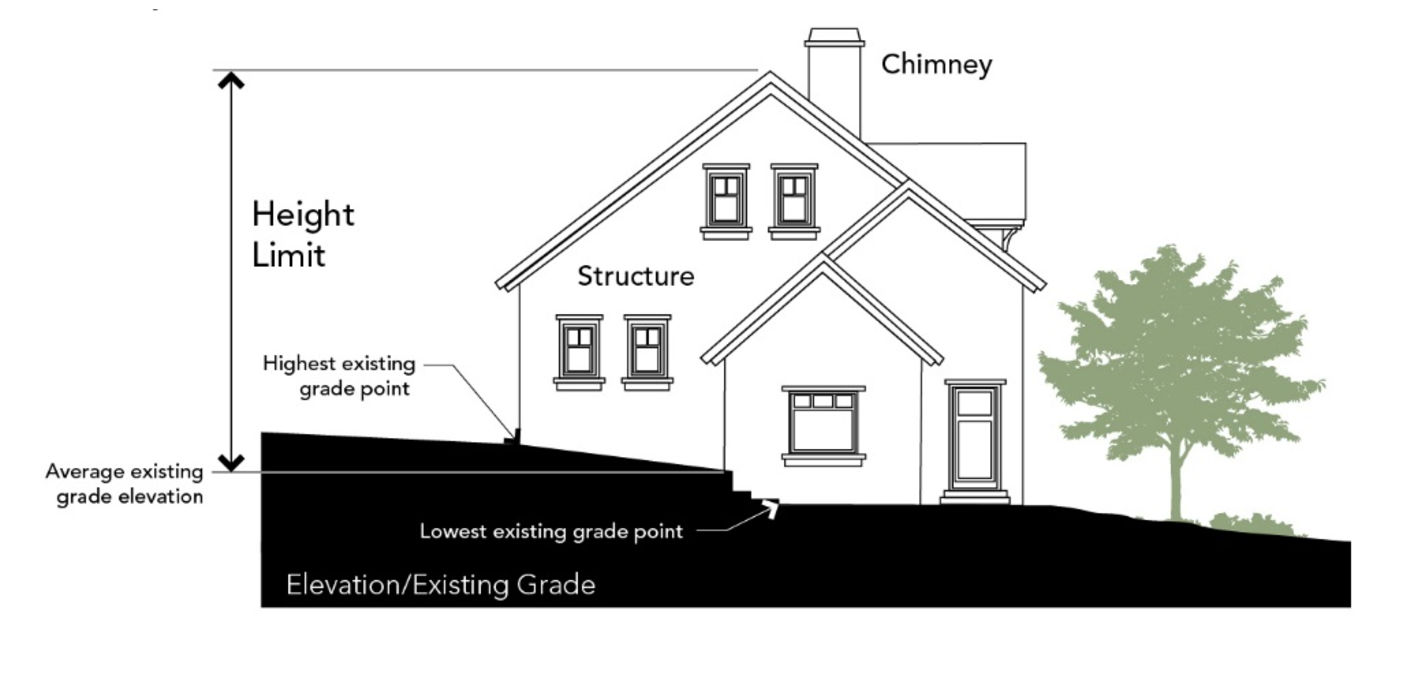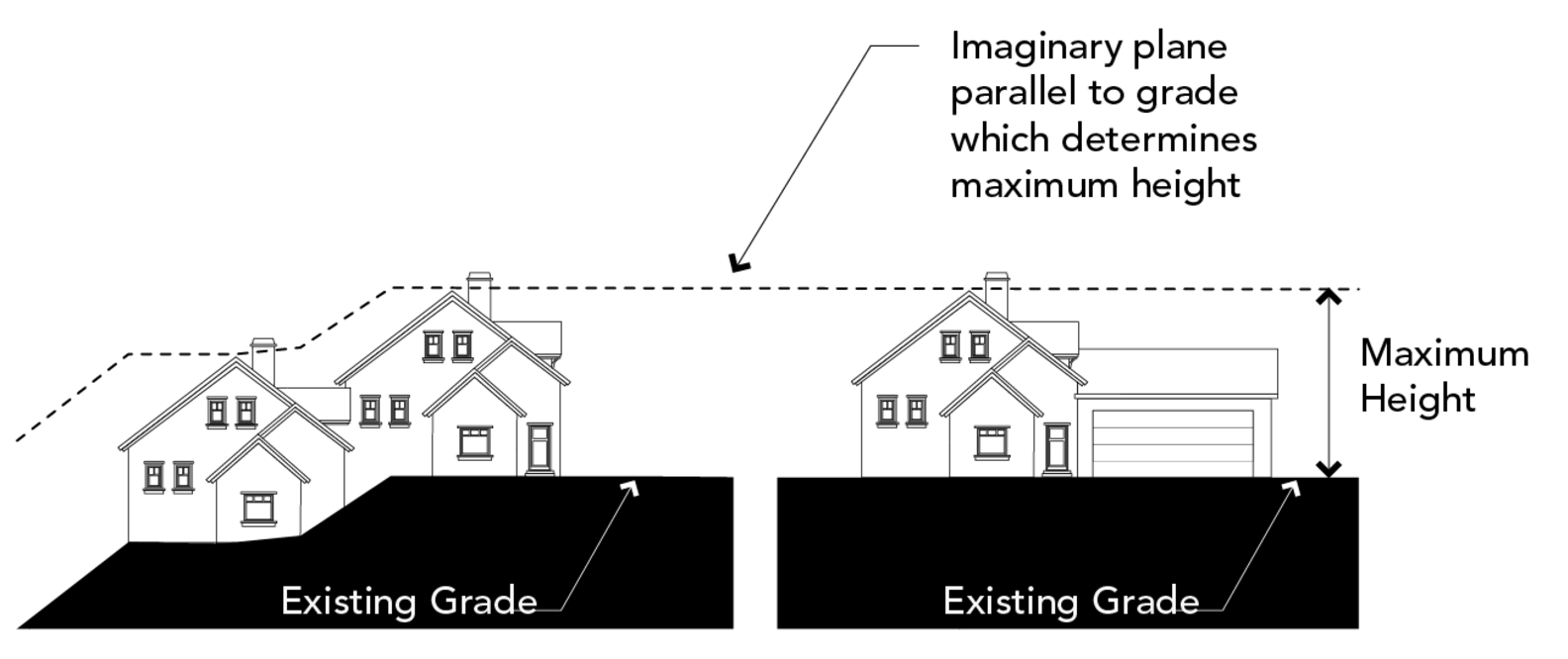17.70.080 Height measurement and exceptions.
A. Residential and Nonresidential Building Height on Flat Lots. For flat lots and lots with an average (cross-parcel) slope of less than sixteen percent, the height of a building or structure shall be measured as the vertical distance from the average level of highest and lowest existing grade of that portion of the site covered by the building to the topmost point of the roof, including parapets but excluding features outlined in subsection C of this section. The average level of the ground is determined by adding the elevation of the lowest point of the part of the lot covered by the building to the elevation of the highest point of the part of the lot covered by the building and dividing by two. Height measurements shall be based on existing topography of the site, before grading for proposed on-site improvements. (See Figure 3-7: Measurement of Structure Height: Flat Ground and Slopes of Less than Fifteen Percent.)
Figure 3-7. Measurement of Structure Height: Flat Ground and Slopes of Less than Fifteen Percent

B. Building Height on Slopes with Sixteen Percent Grade or Greater. For lots with an average (cross-parcel) slope of sixteen percent or greater, the height of a building or structure shall be measured as the vertical distance from the adjacent existing grade to the topmost point of the roof, including parapets but excluding features outlined in subsection C of this section. The maximum allowable height shall be measured as the vertical distance from the existing grade of the site to an imaginary plane located at the allowed height above and parallel to the grade. Height measurements shall be based on existing topography of the site, before grading for proposed on-site improvements. (See Figure 3-8 Measurement of Structure Height: Slopes of Sixteen Percent of Greater.)
Figure 3-8. Measurement of Structure Height: Slopes of Sixteen Percent or Greater

C. Exceptions.
1. Setbacks and Building Heights. See also Sections 17.16.020(B) (R-1 Zone, Interior Side and Rear Setback Standards), 17.18.020(B) (R-2 Zone, Interior Side and Rear Setback Standards), 17.20.020(B) (R-3 Zone, Interior Side and Rear Setback Standards), 17.22.020(B) (R-4 Zone, Interior Side and Rear Setback Standards), 17.24.020(B) (O Zone, Interior Side and Rear Setback Standards), 17.26.020(B) (C-N Zone, Interior Side and Rear Setback Standards), and Section 17.70.050(D)(2) (Edge Conditions—Standards—Setbacks) for relationship of setbacks and building height.
2. Projections. Components of solar energy systems, chimneys, elevator towers, screening for mechanical equipment that is not integral with building parapets, vents, antennas, and steeples shall extend not more than ten feet above the maximum building height. See Section 17.70.160 (Satellite Dish Antenna) for restrictions on roof-mounted satellite antenna. See Section 17.86.290 (Wireless Telecommunications Facilities) pertaining to site development and performance standards for wireless telecommunications facilities.
3. Exceptions.
a. Exceptions for Certain Zones. Height exceptions may be permitted in the C-D and PF zones consistent with regulations in Section 17.32.030(E) (Maximum Building Height in the C-D Zone) and Section 17.46.030 (Public Facility Zone, Additional Regulations), respectively.
b. Affordable Housing Exceptions. For height exceptions provided in exchange for affordable housing, see Chapter 17.140 (Affordable Housing Incentives).
c. Other Exceptions. Any other exception to the height limits requires approval of a variance as provided in Chapter 17.114 (Variances).
D. Signs. For height limits of signs, see Chapter 15.40, Sign Regulations. (Ord. 1705 § 17, 2021; Ord. 1650 § 3 (Exh. B), 2018)